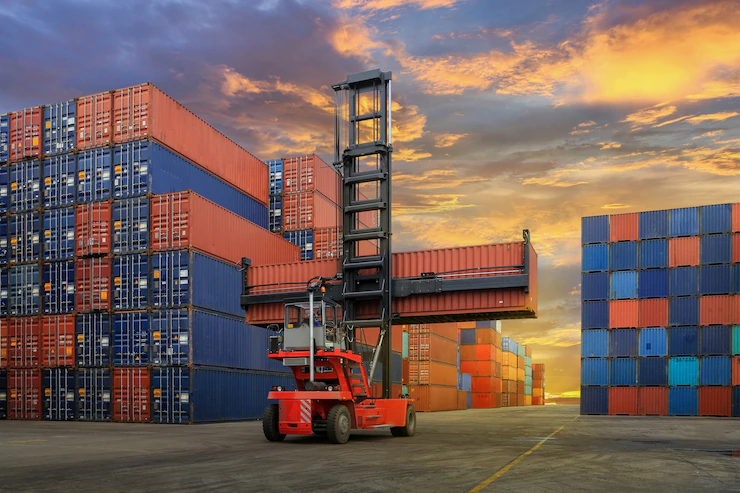Streamlining Logistics With a Transport Management Software (TMS)
5 Mins Read
Published on: 28 May 2022
Last Updated on: 08 November 2024

Transport Management Software (TMS), as a logistics platform, facilitates your company’s order management system, distribution departments, and supply chain.
Today, with the integration of Customer Relationship Management (CRM) platforms with TMS, customer interaction within the TMS has also been made possible.
In this article, we will look at some of the biggest pros and cons of TSM so that you can finally make an informed decision about it. Let’s not waste a single minute and start with our discussion.
Why Do You Need Transport Management Software or TMS?
TMS software helps businesses plan transportation routes and ancillary tasks for this job. Besides these functions, they provide you with multiple functions that will help you optimize your transportation operations.
TMS prioritizes the swift organization of shipping routes for products, identifying the most suitable vehicles or carriers, like fast auto transport services, to facilitate the shipment and manage the payment process.
Along with these core services, TMS also offers a multitude of other functions designed to enhance and streamline your transportation operations.
In this article, we cover some of the different ways through which transport management software streamlines operations.
1. Load Optimization
The function of a load optimization function is to find creative ways to reduce the shipping cost of products or services and to facilitate carriers or vehicles that can deliver these goods quicker.
TMS analyses the shipment size, delivery requirements, location, etc. Using their complex algorithms, they come up with recommendations for carriers that are best for the shipment of goods. In simple terms, load optimization is designed to create the most efficient way of shipping.
2. Route Planning
Here, all your company’s shipping requirements, including volume of shipment, delivery time, and locations of deliveries, are taken into consideration when planning pickups and facilitating vehicles to ship your products or services.
There are other delivery route planning software tools like Route4Me for delivery that you can use to optimize your time and resources and draw the best possible route plans for deliveries. This software can be used for one-time deliveries as well as frequent delivery routine planning.
A TMS has the potential to plan delivery routes, but that will depend on the input you give and the type of TMS you use. They aim to create delivery routes that will reduce shipping costs while improving overall shipping efficiency.
3. Reporting
While planning and optimizing shipments remain critical in streamlining your transport operations, it is just as important to review data analytics.
The modern TMS has the ability to collect data relevant to each aspect of your supply chain operations and create reports that will break down all the critical areas of your business.
It makes sure that your company doesn’t drop the ball in places other than optimizing and planning shipment.
4. Customer Communication Methods
Integrating a CRM system with a TMS system will benefit in improving communication between multiple supply chain partners and the ones involved in the delivery of goods.
The modern TMS can thus set up email or SMS text alerts that will help the customer, vendor, or employees know the location of your shipment, the expected delivery time, if there is any delay in delivery, etc. This will help in improving customer satisfaction.
Regardless of the type of customers or industry you serve, finding innovative ways of streamlining logistics is a top priority for every business today. You can manage these functions by using a well-equipped TMS system.
The best feature of today’s TMS systems is that most of them are in cloud-based form. Using a cloud-based system like Ramco Systems, you will be able to access information from any location, at any time, and from any mobile device.
It is this type of flexibility and convenience that will help improve your business’s operational efficiency.
Limitations Of Transport Management Software or TMS
Transport Management Software can genuinely help your business manage the nuances of logistical problems. They can streamline the whole process and make things easier for businesses.
As a result, these software arrays can help you identify the areas of improvement and what you need to do to be more efficient. However, TMS modules also come with some limitations.
These limitations might not be game-changing. However, these limitations can be annoying.
Therefore, knowing more about these limitations might help you address them more effectively. Here we go!
High Implementation Cost
One of the most significant pain points of this software module is the overall cost. In fact, most users have noted that this software module is too complex to navigate. As a result, the module comes with a steep price.
Implementation costs might be simple for big businesses. However, this can be a big problem for companies that have limited access to funds.
Moreover, the shift from a legacy application and paper-based system to a more sophisticated TMS module can be disruptive.
This is one of the biggest problems of the change. In fact, in some cases, this shift disrupts a company’s financial earnings. Therefore increasing the implementation cost.
High Failure Percentage
Another prominent limitation of a TMS array is the high percentage of failure. This is a significant limitation that can absolutely derail business operations. In fact, in some cases, the disruption can be of considerable scale and lead to widespread problems.
As we have already pointed out, the gradual shift from one system to another comes with its challenges. These challenges can put a business under water. Therefore, you have always to be vigilant about the overall implementation.
Moreover, only some TMS platforms are the same. Therefore, you need to have a clear idea about what your business needs to do the needful. Hence, it can be safely said that implementing a TMS is more like a gamble.
The Final Thought
In summation, these are all the things that you need to know if you want to implement transport management software for your business.
It can help your business in various ways. However, it also brings some challenges to the table. Hence, be very careful about what you wish for.
Do let us know if you liked this piece of content, and keep following us for more. Thank you, and have a great day ahead.
Read Also:


















Comments Are Closed For This Article